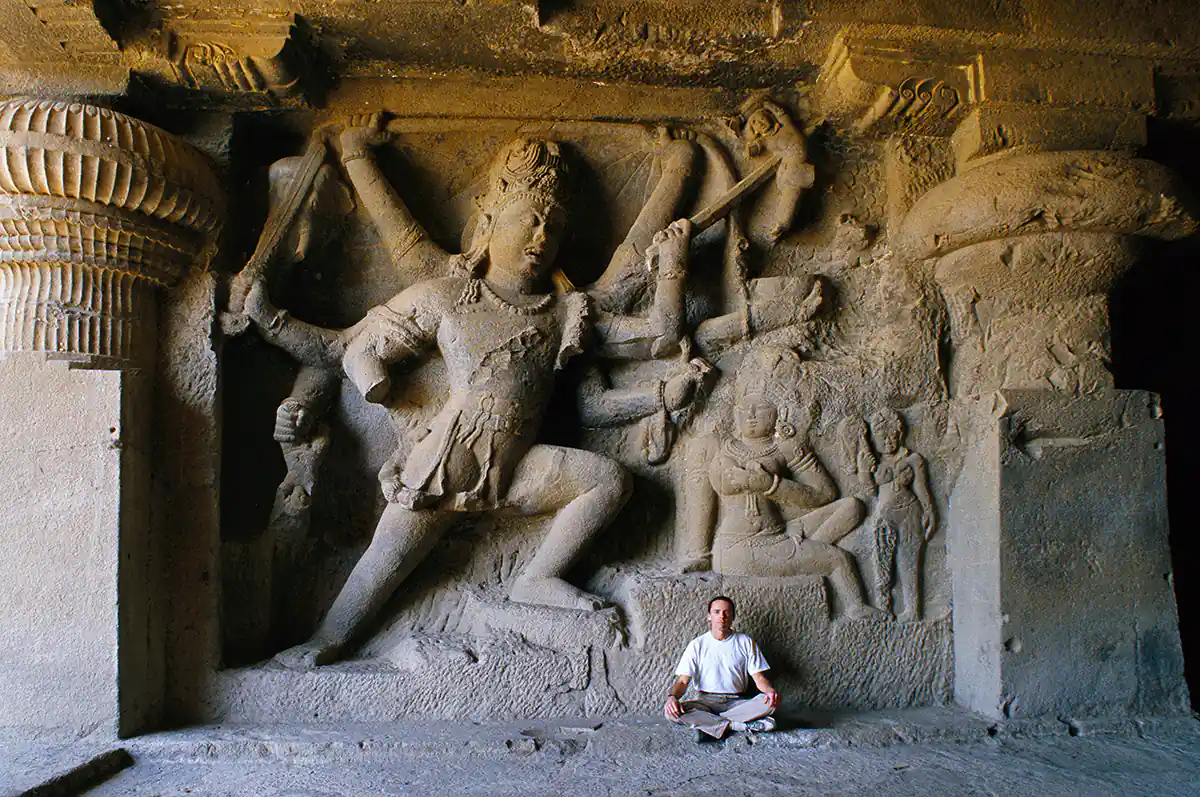Ellora
The complex of Ellora temples in Maharashtra state represents the world's greatest example of cave-cut architecture. Dating from the Gupta period of the 6th to 8th centuries AD, the temples were constructed by digging into a mountainside and removing thousands of tons of rock, leaving only the temple structures behind. Ellora has 34 cave temples: 12 Buddhist, 17 Hindu, and 5 Jain. The construction and use of these temples by different religions is a wonderful testament to the extraordinary spiritual maturity of ancient India.
The photograph shows Shiva, in the form known as Andakasuramardana, in cave number 29 of the Ellora complex. The magnificent temple, called Sita-ki-Nahani or Dhumarlena, was built between AD 650 and 725 and is 50 meters wide by 5 meters high. As Andakasuramardana, Shiva is a slayer of a blind demon. The goddess Kali crouches below to catch the demon's blood in a bowl. While showing significant motion, this particular Shiva form does not represent dancing. Shiva never has fangs or a fearsome expression during his divine dance but displays a radiant calm. Mythologically, Shiva is regarded as the great master of dance, and all 108 modes of dancing have come from him. Shiva's dancing manifests the Panchakryta or five acts of god: creation, preservation, destruction, embodiment, and release. He dances every evening to relieve the sufferings of creatures and entertain the gods and goddesses who gather upon Mount Kailash. Shiva is believed to have manifested in the Nataraja dancing form at the celebrated pilgrimage shrine of Chidambaram in Tamil Nadu state, also shown on this website.
For additional information:

Martin Gray is a cultural anthropologist, writer and photographer specializing in the study of pilgrimage traditions and sacred sites around the world. During a 40 year period he has visited more than 2000 pilgrimage places in 160 countries. The World Pilgrimage Guide at sacredsites.com is the most comprehensive source of information on this subject.

